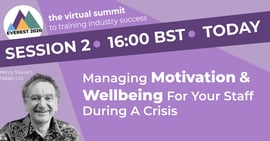The sales process: Training provider best practice
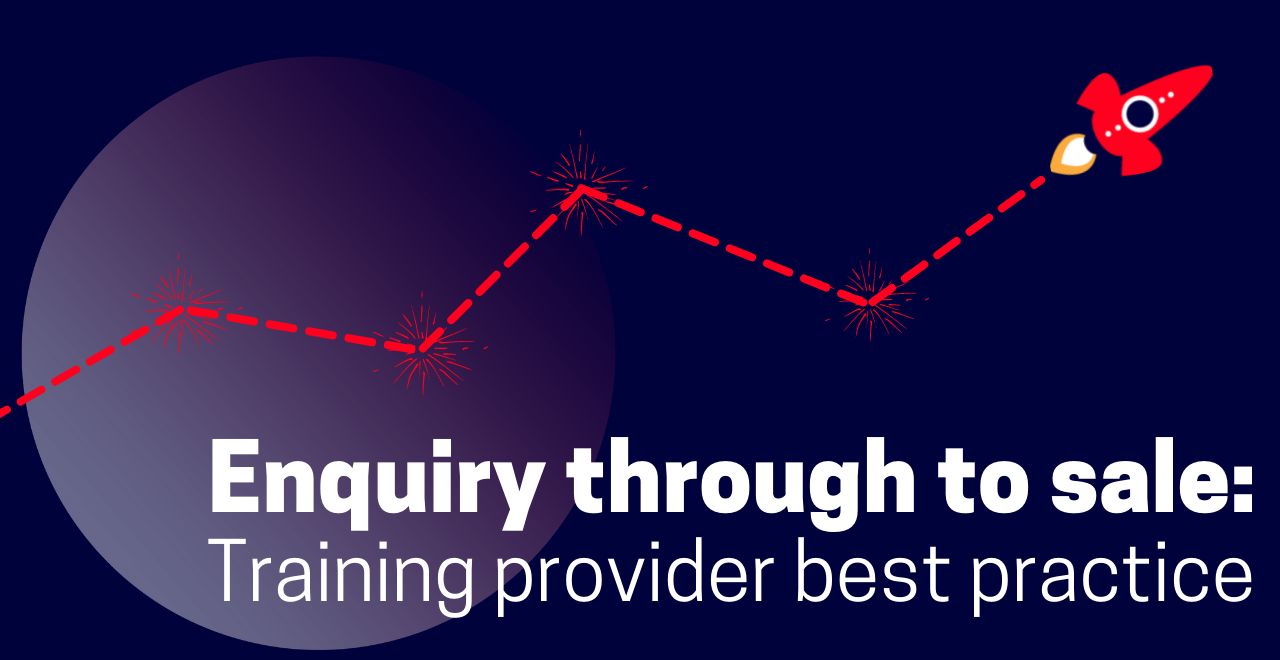
Have you ever mapped out your sales process?
Perhaps you have a well-documented, refined process that's the result of years of research and A-B testing. Perhaps you keep things laid-back and flexible, not sticking to any rulebooks or fixed agendas. Most sales departments tend to operate somewhere between the two.
However your sales process looks (and every organisation's will be different), what's most important is that you're capitalising (and maximising) on the leads and opportunities that come your way. As soon as an enquiry is received through your website, your prospects journey with you has begun. So how can we maximise the chance of our new lead progressing to a successful sale?
At accessplanit, we think there are five key stages that a training provider needs to give special attention to within the sales process in order to maximise new business following an enquiry.
Let's begin by exploring best practice on the very first step, the enquiry itself.
Step 1: The enquiry
Lead capture is the first, and arguably, the most critical step of the whole sales and marketing process. If your prospect never leaves their details in the first place, you've fallen at the first hurdle. Here are some common mistakes training providers make:
- Not including a form - Having to open up an email client to send your training enquiry request means taking the user away from your website, potentially never to return! It also adds an extra step for them to get in touch. In the early stages, convenience and speed for the user is key.
- Hiding the form - If you're planning on increasing conversions, your lead capture form has to be front and centre. Best practice dictates the form will be 'above the fold' - essentially this means visible at the top of the page without the need for scrolling.
- Asking for too much - It's early doors, don't smother the prospect by asking for unnecessary details.
Whether your form leads directly to an individual, a shared inbox, or whether it's logged in a central management system, the important thing is that it's captured with the important details and actioned in a timely manner.
Learn more about the importance of having an effective registration process.
Within accessplanit's training management platform, we offer a HTML feed that our customers plug in to their website. This captures enquiry information, alerts platform users and creates this as an opportunity within the central platform. The information you capture is decided by you. This can be stylised so it matches your brand.
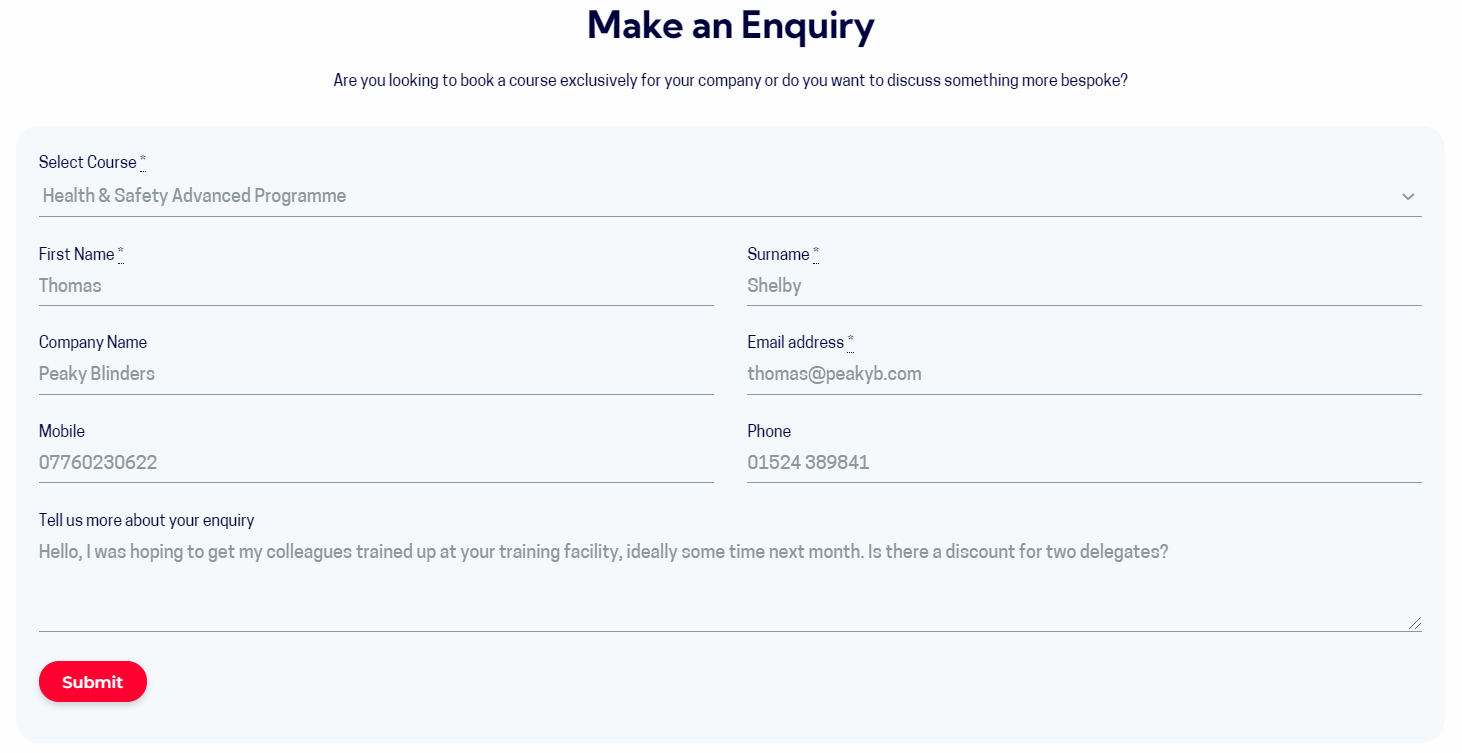
Top tip 💡 Provide value first. Putting a form in front of your prospects face before they've had chance to learn about your offering is a really common mistake. Think about the journey a typical site visitors would take through your website and when the most appropriate time would be to ask for their information. If you're struggling with this, consider using a tool like Hotjar to help you out to find where your site visitors are heading. Or, more simply, use Google Analytics.
Step 2: The follow up
Once a contact has expressed their interest in your training services, what can they expect?
Do you follow up instantly? Is it via call or email? But most importantly, is it consistent?
Deciding who is responsible for the follow up, and having a script or framework to follow is key when handling and responding to enquiries.
The objective of your follow up is to secure next steps - whether that's a call, in-person meeting, sending a contract, following up in six months or perhaps simply parting ways. If you're unable to solidify next steps, or gain any commitment from your prospect, it could lead to a lot of wasted time for you in the long run, potentially nurturing a lead that is simply not interested.
The follow up stage helps to either qualify-in or qualify-out your prospect, and ultimately decide if there is an opportunity to work together assuming things like cost, payment terms, timescales, capacity and location can be mutually agreed upon.
Top tip 💡 Automation is your friend. As soon as the enquiry is submitted, sending out an automated thank you email like below is a great way to acknowledge you've received their submission, encourages them to revisit your website and further promotes your brand.
.png?width=521&name=New%20Project%20(54).png)
Step 3: The nurture
What are the odds your customer will be ready to buy training from you straight away? Pretty low. They may be looking at other providers or simply may not have the available budget at the time of enquiry.
When moving leads through the sales stages, it's crucial to keep a firm handle on what's been said and when. This is particularly important for larger sales teams or organisations where multiple people are involved in the sales process.
Breakdowns or delays in communication can lead to hot leads going cold, therefore it's important to stay fresh and relevant in the mind of your prospects. A great way to stay on top of your opportunities is using dedicated management software such as a CRM.
If things are moving a little slow with your prospect, consider one of the following :
- Running remarketing ads that follow website visitors/pre-selected prospects around on social and other websites
- Sending a connection request and a friendly InMail on LinkedIn or tagging them in something they may find interesting
- Creating a personal camera-facing video on Loom or Vidyard or an animation showing your two businesses working together
- Create targeted content specifically for your prospects industry or job function, adding value and positioning yourselves as experts
Top tip 💡 Document everything. Whether it's a call that goes to voicemail, an email that got ignored or even a social media post that you could use in conversation.
Top tip (2) 💡 Consider other channels. If your prospect has gone cold via email, consider attempting to open dialogue on social, or perhaps you could send a small gift sent to your prospects office? Think outside the box!
Step 4: The sale
When the time has come and everything has been agreed, it's time to send out the contract for signing and an invoice.
A good invoice & contract should:
- Reflect your brand
- Be clear about payment terms
- Be easy to read and understand
- Thank the customer for choosing your business
Once the paperwork is sorted, it's now time to get the course in the diary.
This stage looks different for every training provider, depending on the software you use within your business. For training providers that use a TMS like accessplanit, this stage involves scheduling the course within the course calendar, attributing a trainer and venue, then setting up tasks to ensure everything goes ahead without a hitch.
Preparing and scheduling communications such as COVID questionnaires, joining instructions, feedback forms and other course documentation should be considered long before the course starts.
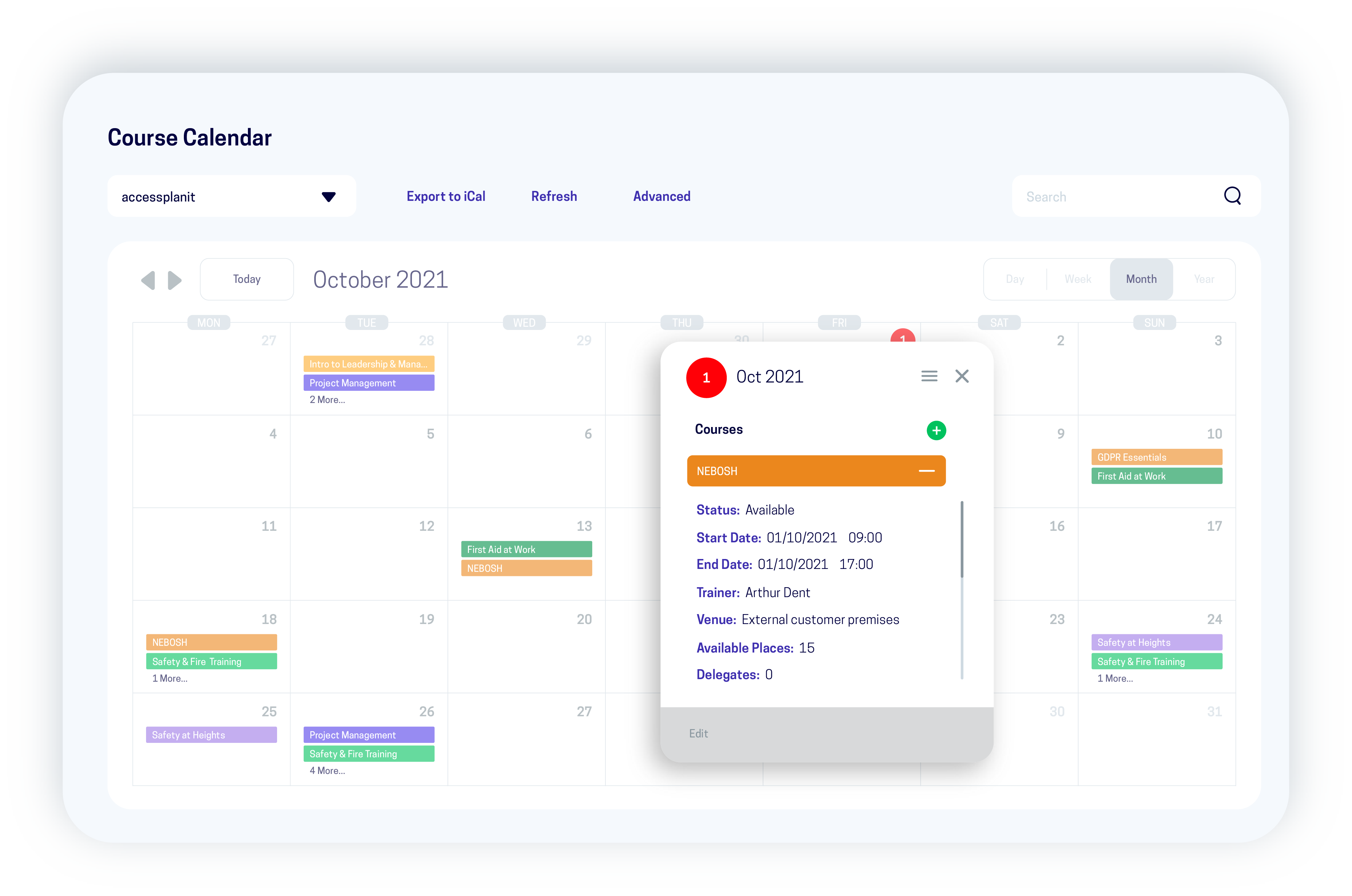
Also, don't forget to move the opportunity to Closed-Won within your CRM!
Top tip 💡 Before agreeing on dates, ensure there are no other prior commitments for the day and that you have a trainer that is available to teach the course and a venue free to host it in (assuming the course is run onsite). Resource management is a time consuming (and often difficult) area of training for coordinators and administrators to stay on top of!
Having to return to your customer red-faced because someone has double-booked does nothing for your reputation, not to mention being rather embarrassing!
Step 5: The tracking
For busy training departments in particular, keeping a handle on lead and opportunity metrics throughout the entire process is crucial. Most CRM's have functionality to support this however much of it is under-utilised. Tracking the right metrics and drawing actionable data from the reports is critical for the evolution of your sales strategy. Some of the most important things to track as a training provider include:
- Touch points: How many touch points did it take for this opportunity to move from enquiry through to sale?
- Origin: How did they find out about you? Was it organic (web search), from a referral, a paid search, social?
- Conversion rate: How many of your enquiries became customers? This can be broken down further - it could measure enquiries that became leads, leads that become opportunities and opportunities that became customers - each of these conversion rates providing valuable information about each part of your sales process
- Pipeline: Knowing the quantity and value of leads and opportunities moving through your sales teams pipeline helps you to forecast anticipated revenue
- Timescales and conversion time: Whether it's calculating the length of the sales cycle or the time spent within each conversion event, reducing the time to conversion is a great way to increase overall leads and conversions
- ROI: Once new business has been secured, calculating your return on investment let's you know if the juice was worth the squeeze! This is particularly important if the lead originated from a paid campaign, live event or some other form of promotion
- Sales KPI's: Tracking calls made, emails sent, meetings secured and new business closed are all common key performance indicators that show the day-to-day activity of your sales team.
Top tip 💡 Despite being unbeatable in terms of data manipulation, spreadsheets aren't ideal for tracking important business metrics. A CRM is the go-to solution for businesses looking to effectively (and securely) track the above information.
Visual displays of important information makes reporting much more straight forward and easier to digest on the go. accessplanit's opportunity Kanban board gives an instant overview of open opportunities and the sales stage they are at.
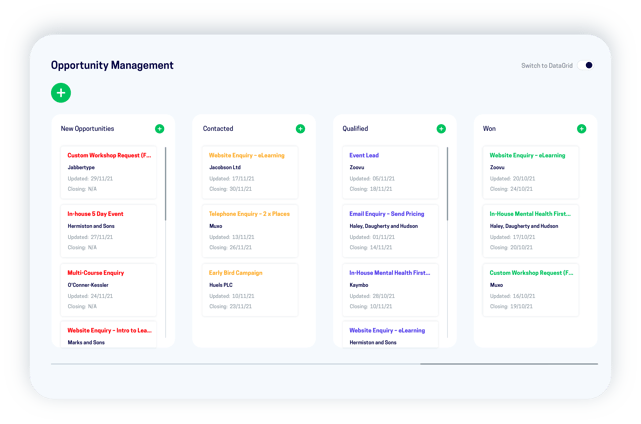
Takeaways
When you've implemented and optimised within the five areas above, your sales function is set up for success. It's easy to overlook or underestimate the importance of individual parts of the entire process, without realising that leads may be needlessly slipping out of your pipeline because of it. Here are our top 5 takeaways:
- Work on your form. Find out what the conversion rate is on pages where your form is located. How many page visitors go on to convert? If the conversion rate is 2% or below, it may be time to sort out that form, or improve the content beside the form in order to add more value. Setting up multiple landing pages allows you to A-B test this and optimise.
- Secure next steps. Make every discovery call count by finding out exactly what your prospect is after and if you can meet their requirements. Try to avoid being left or fobbed off with the unhelpful 'send us some more information' or 'we'll let you know in a couple of weeks' - decide on a date, or, if there's no deal to be made, part ways amicably.
- Be creative. A sales person spends most of their time following up and chasing existing opportunities. It's time to realise that templated follow-up email you send with the generic subject line isn't working. Try using social, targeted content, ads or even in-person mail.
- Track everything. Without data, you can't possibly know what's working and what isn't other than relying on 'gut-feel'. From email open rates, CTA clicks and meetings booked right through to ROI and sales cycles - having your finger on the pulse means you're well positioned to diagnose and repair when things go wrong.
- Use technology. Automation makes sales people's jobs a whole lot easier, and provides customers with a better service. This is before we even consider the time savings for the business. Training management software like accessplanit's can help at every step above through our Opportunities module, built especially for training providers. Come and learn more about how we can help you increase the quantity and quality of leads entering your pipeline.
Find out how to grow your training company in our ultimate guide


